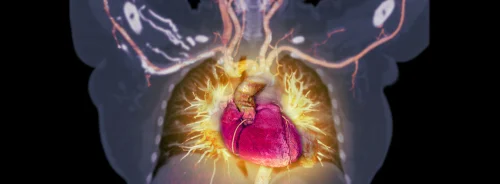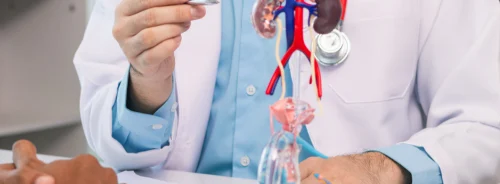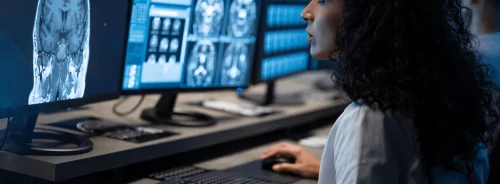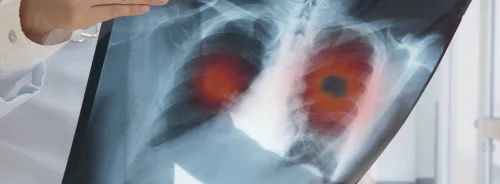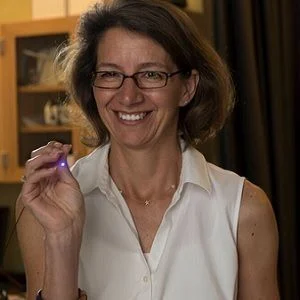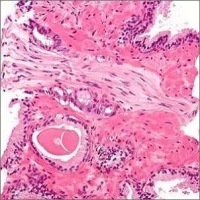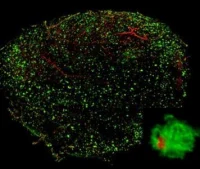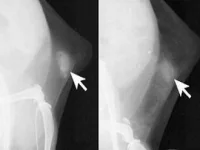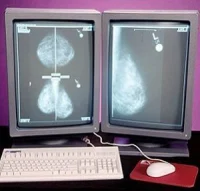Researchers have tested new software that could speed up breast cancer diagnosis with 90 percent accuracy without the need for a specialist. This innovation could greatly improve breast cancer management, particularly in poor countries where pathologists are in short supply. The study is reported in the journal Breast Cancer Research.
"To evaluate fresh breast tissue at the point of care could change the current practice of pathology," says corresponding author Rebecca Richards-Kortum, PhD, of the Department of Bioengineering, Rice University (Houston, TX). "We have developed a faster means to classify benign and malignant human breast tissues using fresh samples and thereby removing the need for time consuming tissue preparation."
Current diagnostic methods require preparation and assessment of tissue samples, whether this is in the context of core needle biopsy diagnosis or surgical excision. Pathologists must currently undergo a complex method to prepare tissue samples for assessment and this is followed by a lengthy diagnosis process.
For this study, Dr. Richards-Kortum and colleagues used high-speed optical microscopy of intact breast tissue specimens to analyse breast tissue. This automated method for diagnosing breast cancer from tissue samples is done without the need for complex tissue sample preparation or assessment by a specialist pathologist.
"We performed our analysis without tissue fixation, cutting and staining and achieved comparable classification with current methods," explains Dr. Richards-Kortum. "This cuts out the tissue preparation process and allows for rapid diagnosis. It is also reliant on measurable criteria, which could reduce subjectivity in the evaluation of breast histology."
The software program analyses images of fresh human breast tissue samples taken using a confocal fluorescence microscope to determine certain parameters typically used in breast tissue analysis. These parameters are then inputted into a classification tree the researchers have developed, to determine whether the tissue sample is benign or malignant.
The research team says there are limitations that need to be overcome before the software can be regularly used. Certain criteria are reliant on the user's observations, which could lead to incorrect classification of breast tissue, the team notes. In addition, optical microscopy is not frequently used in patient care because it is costly and has high maintenance requirements.
"We are excited about the possibility to use these imaging techniques to improve access to histologic diagnosis in developing regions that lack the human resources and equipment necessary to perform standard histologic assessment," according to lead author Jessica Dobbs, also from Rice University's Department of Bioengineering.
Source: Biomed Central
Image credit: Rice University
"To evaluate fresh breast tissue at the point of care could change the current practice of pathology," says corresponding author Rebecca Richards-Kortum, PhD, of the Department of Bioengineering, Rice University (Houston, TX). "We have developed a faster means to classify benign and malignant human breast tissues using fresh samples and thereby removing the need for time consuming tissue preparation."
Current diagnostic methods require preparation and assessment of tissue samples, whether this is in the context of core needle biopsy diagnosis or surgical excision. Pathologists must currently undergo a complex method to prepare tissue samples for assessment and this is followed by a lengthy diagnosis process.
For this study, Dr. Richards-Kortum and colleagues used high-speed optical microscopy of intact breast tissue specimens to analyse breast tissue. This automated method for diagnosing breast cancer from tissue samples is done without the need for complex tissue sample preparation or assessment by a specialist pathologist.
"We performed our analysis without tissue fixation, cutting and staining and achieved comparable classification with current methods," explains Dr. Richards-Kortum. "This cuts out the tissue preparation process and allows for rapid diagnosis. It is also reliant on measurable criteria, which could reduce subjectivity in the evaluation of breast histology."
The software program analyses images of fresh human breast tissue samples taken using a confocal fluorescence microscope to determine certain parameters typically used in breast tissue analysis. These parameters are then inputted into a classification tree the researchers have developed, to determine whether the tissue sample is benign or malignant.
The research team says there are limitations that need to be overcome before the software can be regularly used. Certain criteria are reliant on the user's observations, which could lead to incorrect classification of breast tissue, the team notes. In addition, optical microscopy is not frequently used in patient care because it is costly and has high maintenance requirements.
"We are excited about the possibility to use these imaging techniques to improve access to histologic diagnosis in developing regions that lack the human resources and equipment necessary to perform standard histologic assessment," according to lead author Jessica Dobbs, also from Rice University's Department of Bioengineering.
Source: Biomed Central
Image credit: Rice University
References:
Kortum RR, Dobbs JL et al. (2015) Micro-anatomical quantitative optical imaging: toward automated assessment of breast tissues. Breast Cancer
Research, 20 August 2015, 17:105 doi: 10.1186/s13058-015-0617-9
Latest Articles
healthmanagement, breast cancer, biopsy, microscopy, imaging software, Rice University
Researchers have tested new software that speed up breast cancer diagnosis with 90 percent accuracy without the need for a specialist. The study is reported in the journal Breast Cancer Research.

